TV gets out-of-home and the Internet out of the Net
This article is about one more application for outdoor LED screens and displays. This new application is expanding rapidly and confidently moves to dominate new digital mass media space, specifically “Outdoor TV”.
Below are some examples of outdoor advertising LED screens becoming part and parcel of modern urban space, moreover turning city squares into open “exhibition” complexes (Times Square in New York).
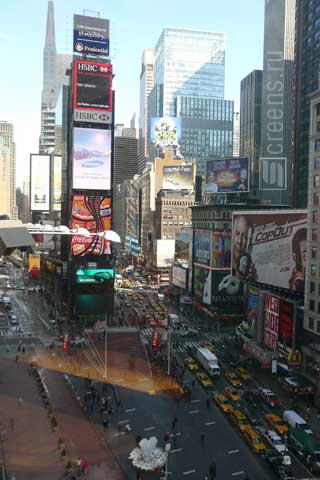 |
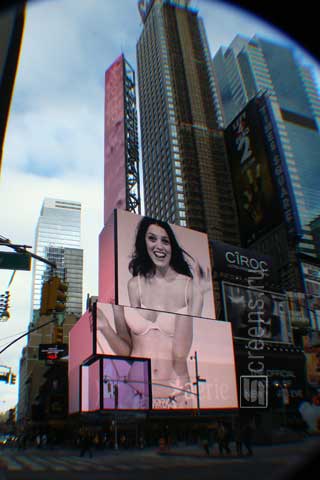 |
| Huge outdoor advertising LED screens at Times Square in New York | |
Unique projects of LED screen media facade in Bucharest manufactured and installed by Daktronics. The media façade consist of 13 large LED screens by Daktronics with total surface of 560 sq. meters, which make it the biggest installation in Europe.
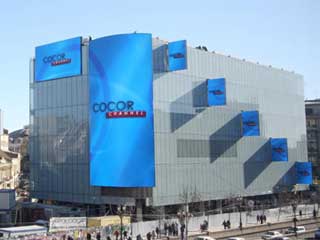 |
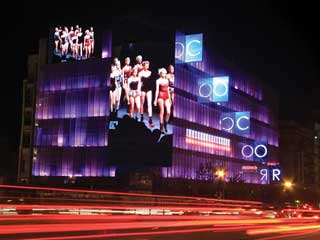 |
| Media façade LED screens of Cocor Shopping Center in Bucharest Photo credit: Daktronics |
Outdoor advertising on Cocor Shopping Center LED screens in Bucharest Photo credit: romania-insider.com |
Such high profile technological-cum-art projects are slowly filling up big cities around the world. However, only this year a new tendency become noticeable: large and medium TV companies finally acknowledged that outdoor LED screens are a vital part of media space, and could be utilized for bringing out TV messages to the general public out there in the streets. Until recently, only a handful of such projects were launched. The most visible was the ABC LED screen in wavy strips on Times Square in New York.
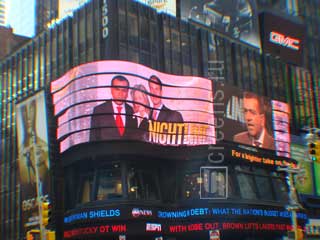 |
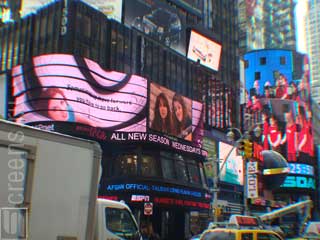 |
| ABC LED screen in wavy strips on Times Square in New York | |
But at the end of 2010 and in early 2011 what used to be a unique individual projects exploded into a fast-growing trendy tendency. As it happens often, US companies lead the way, but Korean and Chinese manufacturers and operators are not too far behind.
Naturally, most TV channels have long been using indoor LED screens in staging their talk shows, for interactive decoration of studio space and concert halls, for conducting TV bridge programs. However, to expand broadcasting to outdoor public spaces (what is now used DOOH territory) is an innovation.
TV channels started thinking about utilizing DOOH potential only when the numbers of outdoor digital screens became statistically large – which only happened at the end of 2009.
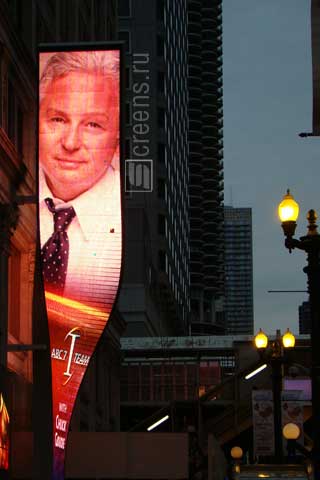 |
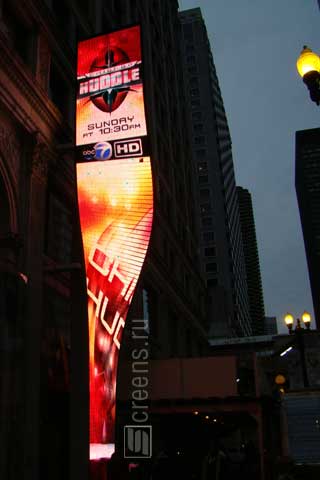 |
| Vertical LED video sign of the ABC7 Channel office in Chicago | |
Mobile operators don’t want to limit their options by offering only voice and text communication to the public. They started reaching out to the Internet space in an attempt to expand their services. At the same time Internet operators are stifled by the virtual computer space and want to get out into the city streets.
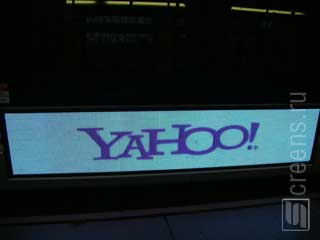 |
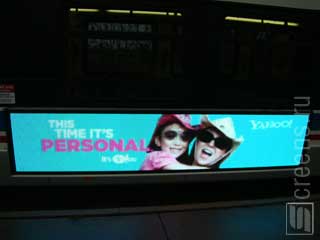 |
| Banner like LED video sign with Yahoo advertizing | |
Similarly, TV channels started searching for viewers not only in the privacy of their homes but actively canvas for support in the streets, in public transport, in shops and business-centers. Some interesting though tentative approaches of TV operators are worth mentioning.
TV studios attempt to display their openness towards their audience; some TV studios opened their offices to show to the passing pedestrians how TV news programs are being made. The news are now created in front of everyone. If this tendency persists than in every city (or even every district) we will soon see a local Times Square.
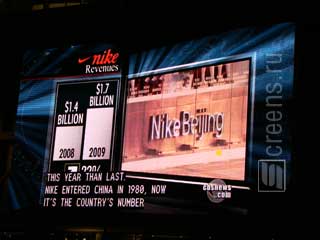 |
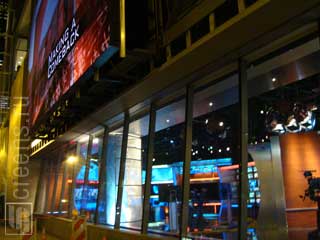 |
| Outdoor LED screen of CBS Studio in Chicago | |
The first equivalent of Times Square we found in Hong Kong where a large commercial area with dozens of LED screens is called Times Square. Many of the outdoor LED screens operate not only as advertising carriers but as an extension of TV channels, offering current news to thousands of frantic shoppers.
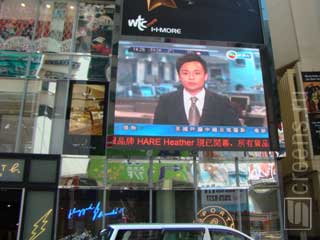 |
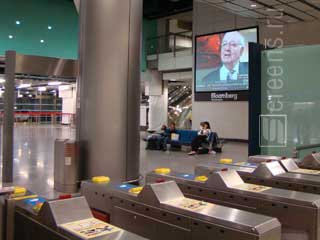 |
| TV news on LED screens in Hong Kong | |
Fierce completion between TV channels (more than 100 free channels in the USA, China, dozens in various countries of Europe) forces them to use outdoor advertising in an attempt to attract viewers and raise ratings.
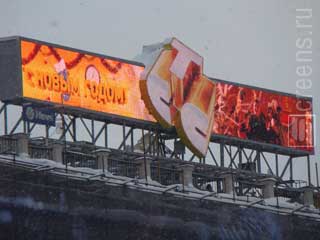 |
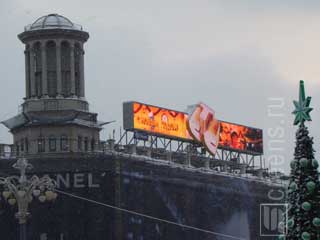 |
| LED sign promoting one of the entertainment TV channels CTC in Moscow | |
Creating their own or acquisition of the existing LED screen networks by TV channels as an easiest way to extend TV broadcasting to the out-of-home domain.
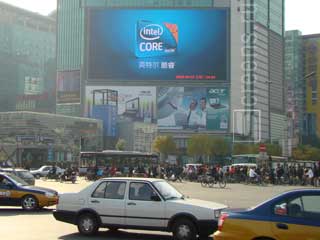 |
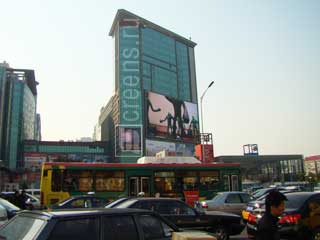 |
| Outdoor screens of the TV company Phoenix (China), which set up a specialized division Phoenix LED Media Network that controls and operates 43 LED screens in 13 cities in China. |
|
How can we explain the above tendencies of OOH TV?
Naturally, it all started with new developments in manufacturing of LED screens. Technical improvements resulted in drastically lower prices. New silicon reactors saturated the market of silicon plates for intellectual microchips (IC drivers and microchips). Competition among hundreds of LED manufacturers in South Asian regions contributes to lower prices and gradual improvement of final quality.
An important factor is fashion. It has become fashionable to own a LED screen or a outdoor screen network. With the explosive growth in the number of LED screens around the world and the fact that lighting systems are gradually changing into LED-based systems, we will probably call the 21st century – an age of LEDs.
As the TV channels open their studios right in the middle of our cities for everyone to see, the towns are getting brighter, more interesting to visit, while the digital world continues to win over new vistas.
And that means that all of us will benefit from the newly appearing possibilities, naturally, only if the digital out-of-home TV does not develop spasmodically and erratically, but in a well-planned fashion with proper concern for public safety (permissible electromagnetic emissions) and aesthetics of modern urban architecture.





